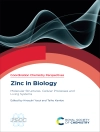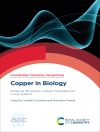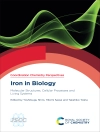The art of chemistry is to thoroughly understand the properties of molecular compounds and materials and to be able to prepare novel compounds with p- dicted and desirable properties. The basis for progress is to fully appreciate and fundamentally understand the intimate relation between structure and function. The thermodynamic properties (stability, selectivity, redox potential), reactivities (bond breaking and formation, catalysis, electron transfer) and electronic properties (spectroscopy, magnetism) depend on the structure of a compound. Nevertheless, the discovery of novel molecular compounds and materials with exciting prop- ties is often and to a large extent based on serendipity. For compounds with novel and exciting properties, a thorough analysis of experimental data – state-of-the-art spectroscopy, magnetism, thermodynamic properties and/or detailed mechanistic information – combined with sophisticated electronic structure calculations is p- formed to interpret the results and fully understand the structure, properties and their interrelation. From these analyses, new models and theories may emerge, and this has led to the development of ef cient models for the design and interpre- tion of new materials and important new experiments. The chapters in this book therefore describe various fundamental aspects of structures, dynamics and physics of molecules and materials. The approaches, data and models discussed include new theoretical developments, computational studies and experimental work from molecular chemistry to biology and materials science.
Jadual kandungan
Molecular Associations Determined from Free Energy Calculations.- Molecular Modelling for Systems Containing Transition Metal Centres.- Magnetic Anisotropy in Cyanide Complexes of First Row Transition Metal Ions.- Structure and Function: Insights into Bioinorganic Systems from Molecular Mechanics Calculations.- Artificial Photosynthetic Reaction Center.- Multifrequency EPR Spectroscopy: A Toolkit for the Characterization of Mono- and Di-nuclear Metal Ion Centers in Complex Biological Systems.- On Stacking.- Structurally Complex Intermetallic Thermoelectrics – Examples from Modulated Rock-Salt structures and the System Zn-Sb.- Solid State Transformations in Crystalline Salts.- Influence of Size and Shape on Inclusion Properties of Transition Metal-Based Wheel-and-Axle Diols.












